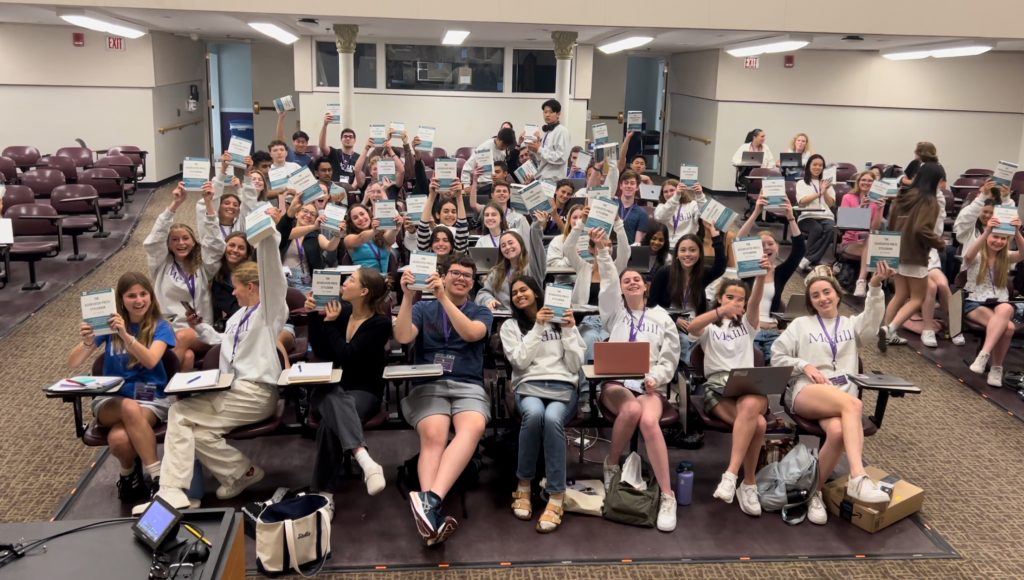Chefs have spatulas. Painters have palettes. Doctors have their stethoscopes. Journalists? We have the AP Stylebook.
Cherubs at the Medill-Northwestern Journalism Institute received their own stylebooks before facing off in a last-student-standing competition to determine who was the most well-versed in Associated Press style rules.
The AP Stylebook provides the correct spelling and usage of words and so much more. In 624 pages, journalists have a complete guide to life.
Here are the top 10 AP style pointers from cherub instructors.
1. Oxford comma
While many are tempted to include the serial comma, in journalism it’s important to remember that a comma is treated as a substitute for “and” in lists. For “red, white and blue,” adding an Oxford comma would effectively make the phrase “red white and and blue.” Omit the Oxford comma unless leaving it out would confuse readers.
2. Punctuation inside quotation marks
With quotes making up a large portion of every story, journalists must get this right. Commas and periods go inside the quotation mark that closes the quote. Ending a quote “like this”, is sure to give your instructor a heart attack. Make sure commas and periods in quotes look “like this,” instead.
3. Numbers one to nine written out instead of numerals
Numbers one through nine are generally spelled out. Use numerals for everything else. For example, in “Instructor Joe Grimm wore four different hats today,” the number four is written instead of the numeral. The latest AP stylebook lists ages, dimensions, votes and other exceptions to the numerals rule.
4. Non-sexist writing
Use gender-neutral terms for jobs and avoid language that ties occupations and gender together. For example, use “police officer” instead of “policeman” or “policewoman.”
5. Subject-verb agreement
When writing or rewriting, it’s easy to forget subject-verb agreement. Plural nouns take plural verbs. Singular nouns and verbs go together. The same is true with nouns and pronouns. Read drafts aloud and make sure that grammar is consistent. There’s a big difference between “the team is” and “the team are.”
6. Colons
Colons introduce. According to AP, “Capitalize the first word after a colon only if it is a proper noun or the start of a complete sentence.”
7. Titles
Our AP Style quiz had cherubs dropping like flies. Capitalize formal titles only and capitalize them only before a name. Use lowercase if used after. “President Obama,” and “Obama, the president.” When in doubt, put the title after the name.
8. Addresses
Street addresses vary. In numbered addresses abbreviate avenue, boulevard and street. Not road. For example, “Pennsylvania Avenue” but “1600 Pennsylvania Ave.”
9. Use cardinal numbers in dates
Delete ordinal indicators such as “th” “st” “rd” and “nd” after dates. Use “July 3” instead of “July 3rd.”
10. Abbreviating months
For dates, abbreviate January, February, August, September, October, November and December. March, April, May, June and July are short enough to spell out alone. “May 8,” “Jan. 23” and “Dec. 14” are examples of proper usage.
In the cherub world, these are our ten 10 commandments.
If you want to ace your AP style quiz next year, earn a couple of prizes and impress your instructors, practice your stylebook skills.


